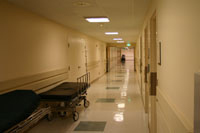
The new blue light specials: Flu shots, strep tests, sutures
In recent years grocery stores and discount retailers have been leasing space to banks, pharmacies, beauty parlors and even optometrists in an effort to increase foot traffic and sales. The latest twist on the trend brings health-care clinics to the places where people shop. Drug store chains and discount retailers like Target and Wal-Mart have joined forces with health-care companies to open in-store medical clinics operated by nurse practitioners or physician’s assistants. The concept is not without its critics, but proponents say it can be a boon to people with minor health-care issues and no insurance, who otherwise might end up in the local hospital’s emergency room.






